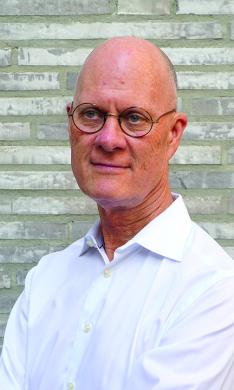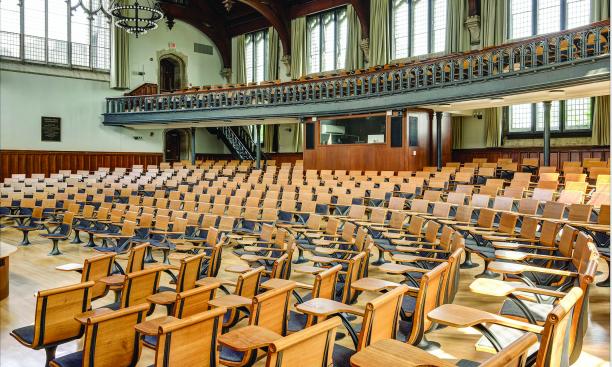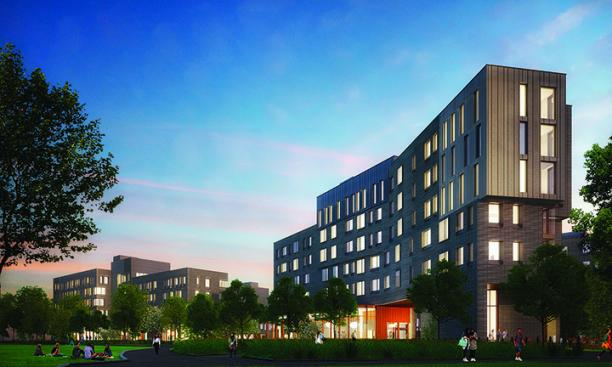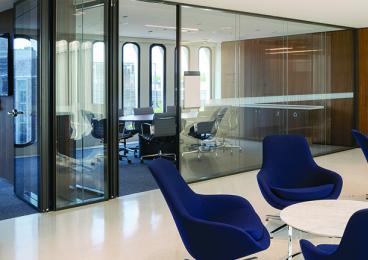


“It is one of the most iconic spaces on campus,” said University Architect Ron McCoy *80. “It’s just a glorious space that has all kinds of character-defining elements of the Princeton campus. It also is a real workhorse as a place for teaching.”
The University recently completed an overhaul of the 113-year-old hall, upgrading the technological tools that today’s faculty rely on — including the largest video screen in an academic building on campus — while aiming to maintain the character of the space.
McCoy said the project included improvements in visibility and acoustics. Subtle changes were made to the lighting, seating was adjusted to enhance sight lines, and acoustic-performing insulation was added to the ceiling, along with tiny perforations in the new wooden ceiling panels. The most noticeable change may be at the ground level: The installation of new wood flooring and subflooring has removed the familiar squeaks that made it nearly impossible for latecomers to slip into the room without being noticed.
The seats are also new, but at first glance, they appear nearly identical to the distinctive McCosh chairs used by generations of Princetonians. The new version includes a soft cushion — “to make those long lectures more comfortable,” McCoy said — and is about two inches wider and two inches deeper than the original (also for comfort, but perhaps a reflection of how body shapes have changed in the span of a century).
COVID-19 has delayed the renovated McCosh 50’s use for classes and events, but McCoy is looking forward to the hall’s next public lecture, whenever it may be. “I think the first impression will be that nothing has changed but it looks better,” he said.
While many of the University’s daily activities have been disrupted by the pandemic, construction on campus has progressed steadily. New Jersey Gov. Phil Murphy allowed higher-education construction work to continue in April and early May, when other projects were restricted by the state’s stay-at-home rules. In addition to the work at McCosh, two notable projects were completed over the summer: an interior renovation of Robertson Hall, which McCoy said will foster community and “serendipitous encounters”; and a reconfiguration of the engineering library, which has moved from the Friend Center to the space that bridges the Lewis Science Library and Fine Hall.


Softball will move to the new Lake Campus, on the southern side of Lake Carnegie. That area also will house the racquet center, which features courts for indoor and outdoor tennis and squash. The racquet center will have a fitness facility that will be open to the campus community, including those living in the new Lake Campus graduate housing, targeted to open for the 2023–24 academic year.
Other campus projects on the horizon include:
Beneath some of the new construction will be what Princeton’s facilities staff sees as the future of campus energy: geothermal wells — each about 850 feet deep — used in a system that circulates water for heating and cooling buildings. Converting the campus from steam to the more energy-efficient geothermal system will play a significant role in the University’s quest to be carbon-neutral by 2046, McCoy said. A new building known as TIGER (Thermally Integrated Geo-Exchange Resource), on the corner of FitzRandolph and Faculty roads, will manage the system on the East Campus. “People will not see [the geothermal system] the way you see a new art museum, but it’s a significant investment in the infrastructure of the future campus,” McCoy said.
What are your favorite McCosh 50 memories? Send your memories of lectures, speakers, and more to paw@princeton.edu or send a comment to Inbox below. Responses may appear in a future issue.